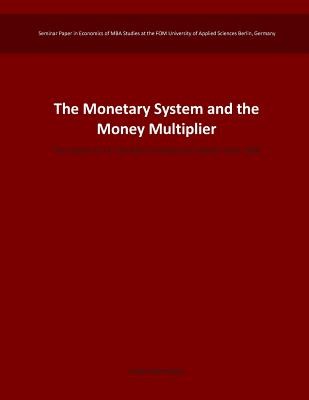
- We will send in 10–14 business days.
- Author: Heiko Schmolke
- Publisher: CreateSpace Independent Publishing Platform
- ISBN-10: 1512364770
- ISBN-13: 9781512364774
- Format: 21.6 x 27.9 x 0.2 cm, minkšti viršeliai
- Language: English
- SAVE -10% with code: EXTRA
Reviews
Description
This research analyzes the impact of the U.S. Fed bond-buying program on the economy since 2008 and on inflation in particular. The theoretical basics for understanding the present monetary system are illustrated by introducing the monetary multiplier with its corresponding ratios and parameters. The current scientific consensus is also examined by analyzing the latest publications and papers of acknowledged economists. In addition, statistics on money supply and inflation show that the Quantitative Easing Programs from the Fed have no current impact on inflation, which can be considered as reassuring but also alarming. A dramatic buildup of excess reserves as a byproduct of QE is worrying. The largest concern about the end of QE is how to reduce these excess reserves appropriately. Experiences from the Bank of Japan during their orderly exit from Quantitative Easing provide some strategies and alternatives how the Fed can reduce the enormous amount of reserves. Furthermore, the lessons learned from the BoJ show that the composition of assets the Fed has acquired will for the most part determine their approach to exit. This investigation was created as part of a seminar paper of MBA studies at the FOM University of Applied Sciences Berlin, Germany.
EXTRA 10 % discount with code: EXTRA
The promotion ends in 21d.02:25:13
The discount code is valid when purchasing from 10 €. Discounts do not stack.
- Author: Heiko Schmolke
- Publisher: CreateSpace Independent Publishing Platform
- ISBN-10: 1512364770
- ISBN-13: 9781512364774
- Format: 21.6 x 27.9 x 0.2 cm, minkšti viršeliai
- Language: English English
This research analyzes the impact of the U.S. Fed bond-buying program on the economy since 2008 and on inflation in particular. The theoretical basics for understanding the present monetary system are illustrated by introducing the monetary multiplier with its corresponding ratios and parameters. The current scientific consensus is also examined by analyzing the latest publications and papers of acknowledged economists. In addition, statistics on money supply and inflation show that the Quantitative Easing Programs from the Fed have no current impact on inflation, which can be considered as reassuring but also alarming. A dramatic buildup of excess reserves as a byproduct of QE is worrying. The largest concern about the end of QE is how to reduce these excess reserves appropriately. Experiences from the Bank of Japan during their orderly exit from Quantitative Easing provide some strategies and alternatives how the Fed can reduce the enormous amount of reserves. Furthermore, the lessons learned from the BoJ show that the composition of assets the Fed has acquired will for the most part determine their approach to exit. This investigation was created as part of a seminar paper of MBA studies at the FOM University of Applied Sciences Berlin, Germany.


Reviews